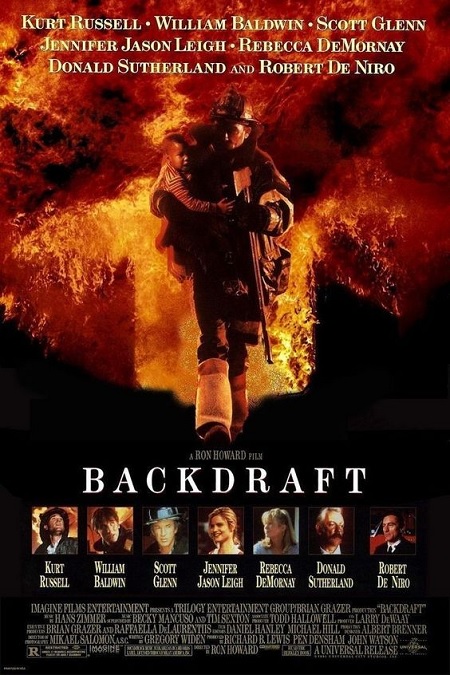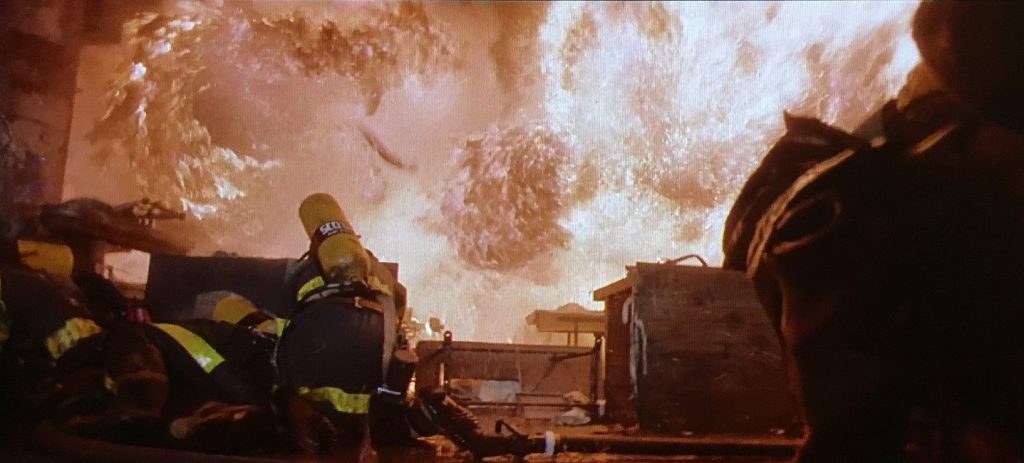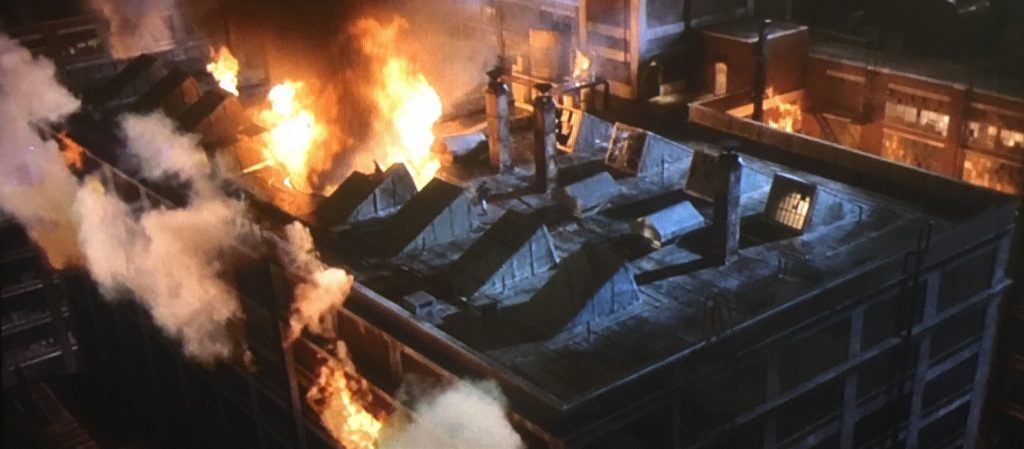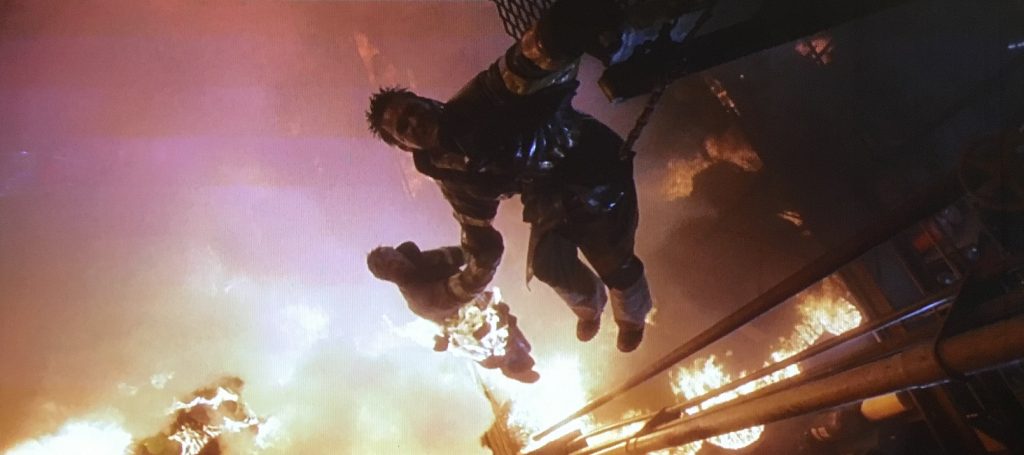



Backdraft – 1991

The effects for this film were very well done. In fact, they were nearly perfect. As you might imagine from seeing the movie poster, the screen captures, and the name of the film, the effects in this film were mostly fire based. The plot revolved around firemen, and the fire effects were unlike any other movie I have ever seen. They were just incredible.
The actual fires, the miniature models, the compositing, the matte-paintings, and even the really cool use of CGI flames, were all perfectly executed. But it was the ultimate reality, or in this case un-reality, of the behavior of the flames, that threw things askance. I understand that this was the fault of the script and not the visual effects, though they cannot be held blameless. In my research, I found that in real fires of the magnitude shown in this movie, there is always so much smoke and ash in the air that visibility is pretty much non-existent. But they couldn’t do that if we, the audience, need to hear and see what is being said and done in the midst of the infernos.
Fire isn’t alive, and doesn’t behave like a living entity. But that being said, the effects themselves were pretty spectacular. We got to see fire behave in a number of different ways. We saw it shoot like rockets, flow like water, spin like a tornado, and explode like a bomb. It crept around corners, hid behind walls, and retreated under doors. Most of the flames caught on film were real, though not all of them.
There was one sequence in particular in which our good friends as ILM created photorealistic flames that destroyed the roof on which our hero is running. As the roof crashes in upon itself, great exploding balls of flame begin bursting into the dark sky. They seem to chase the character of Brian to the edge of the roof.
According to a 1991 article in Entertainment Weekly by Christopher Henrikson, when creating the film’s real flames, the visual effects artists experimented with burning different kinds of flammable substances like alcohol, kerosene, diesel fuel, and propane. “They wanted a fire that was dirtier and more realistic than the bright gas-jet flames usually seen in films. To harness their volatile fuels, the crew built steel tanks that sprayed the liquids through a nozzle before igniting them four or five feet from the machine, much the way a flamethrower works. The largest of these tanks was called ‘Big Bertha’ for its 100-gallon capacity and its awesome ability to discharge a 60-foot-by-20-foot wall of fire.”
The article goes on to say that about ninety-five percent of the flames in the movie were real, filmed on location. So the actors had to endure some pretty difficult and dangerous conditions. But I also learned that there were very few injuries over the course of the four-and-a-half-month shoot, besides a couple of minor burns and singed eyebrows. Still, it all added up to some pretty impressive visuals that really deserved their Oscar nomination. Now, if they just could have done something about William Baldwin’s bad acting…